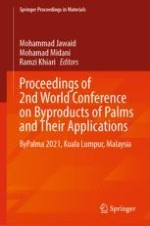This book presents the selected papers presented at the 2nd World Conference on Byproducts of Palms and their Applications (ByPalma 2021), held as a virtual conference on September 28–30, 2021. The conference focused on the byproducts of palm plantations around the globe and their current and potential applications. It provided an interdisciplinary platform for leading academic scientists, researchers, artisans, entrepreneurs and industry professionals as well as palm growers to exchange recent developments, technologies, innovations, trends, concerns, challenges, and opportunities, related to palm by-products R&D, manufacturing, and crafts. As a reference, it will be of interest to students, scientists, engineers, government officials, and industrial practitioners.
